Most people think of deserts as dry, empty places with nothing but sand and heat — not exactly where you’d go looking for fruit. But the desert is full of surprises. Hidden among the thorns and rocks are plants that grow real, edible fruits – many of which are not only safe to eat but are tasty and packed with vitamins.
These hardy fruits have helped desert people stay alive for centuries. Some are sweet and juicy, others tart or nutty, but almost all of them are tough survivors, just like the land they grow in. Learning about these desert fruits can be helpful in a survival situation or simply fun if you enjoy nature and unusual foods.
As always, never eat anything in the wild unless you’re sure what it is. A guide can help you stay safe. In the meantime, here’s a look at 23 incredible fruits you might find growing in some of the driest places on Earth.
1. Prickly Pear
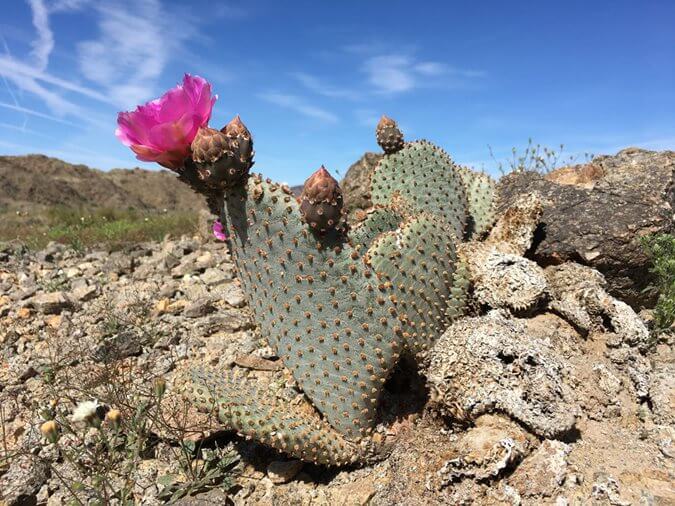
Found on various species of Opuntia cacti, the prickly pear produces a bright, jewel-toned fruit known as a tuna. Once you carefully remove its sharp spines and glochids, the flesh inside is wonderfully sweet and melon-like, dotted with crunchy edible seeds. Traditionally eaten fresh, juiced, or dried into fruit leather, this desert treasure is high in vitamin C and antioxidants — but only if you harvest it with thick gloves and tongs. The pads (known as nopales) are also edible when young and make excellent survival food when cooked.
2. Saguaro Cactus Fruit
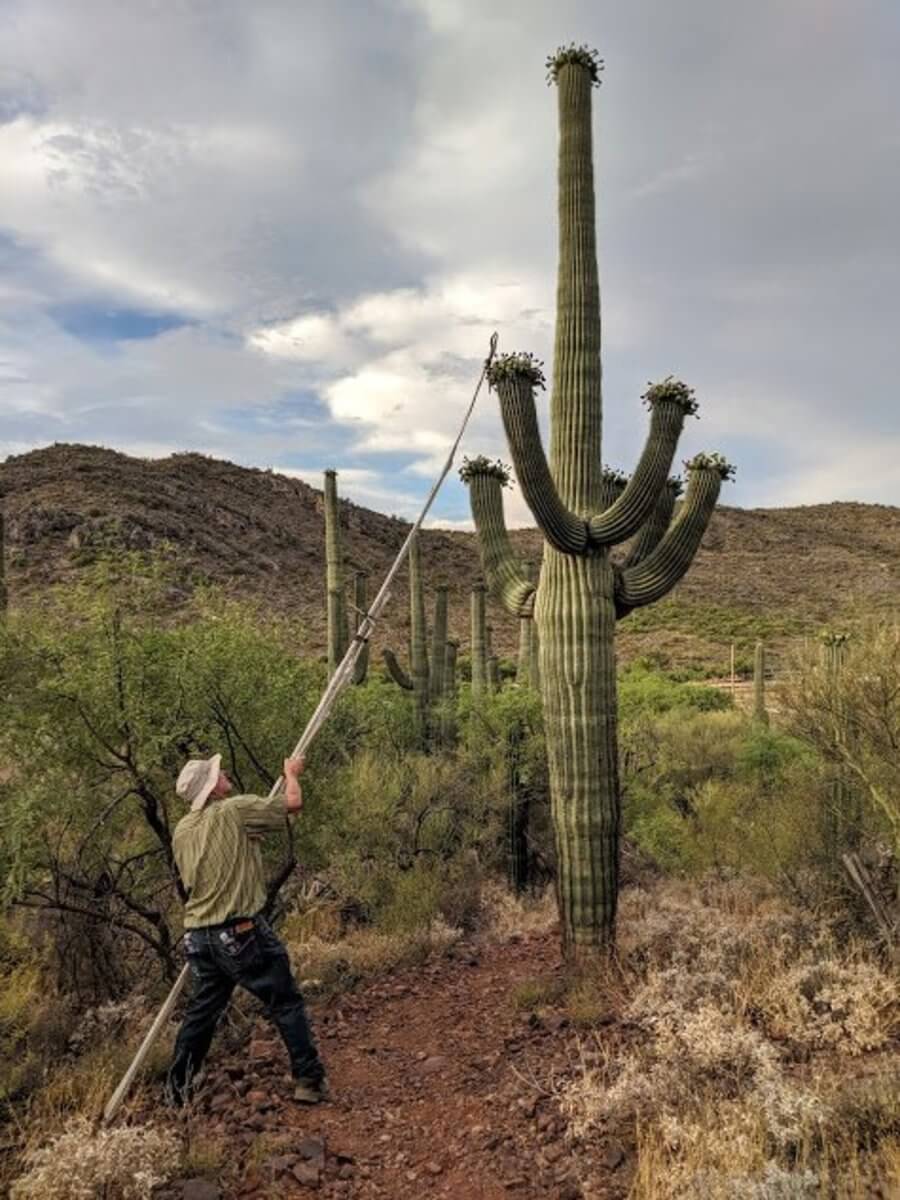
The mighty saguaro cactus (Carnegiea gigantea), icon of the Sonoran Desert, bears small red fruits at the tips of its towering arms in early summer. Once split open, these fruits reveal a sweet, seedy pulp that tastes similar to strawberries mixed with figs. Historically harvested by the Tohono O’odham people using long poles, saguaro fruit is juicy, high in natural sugars, and valued for its moisture content — making it a true lifesaver in a water-scarce landscape.
3. Jojoba Nuts
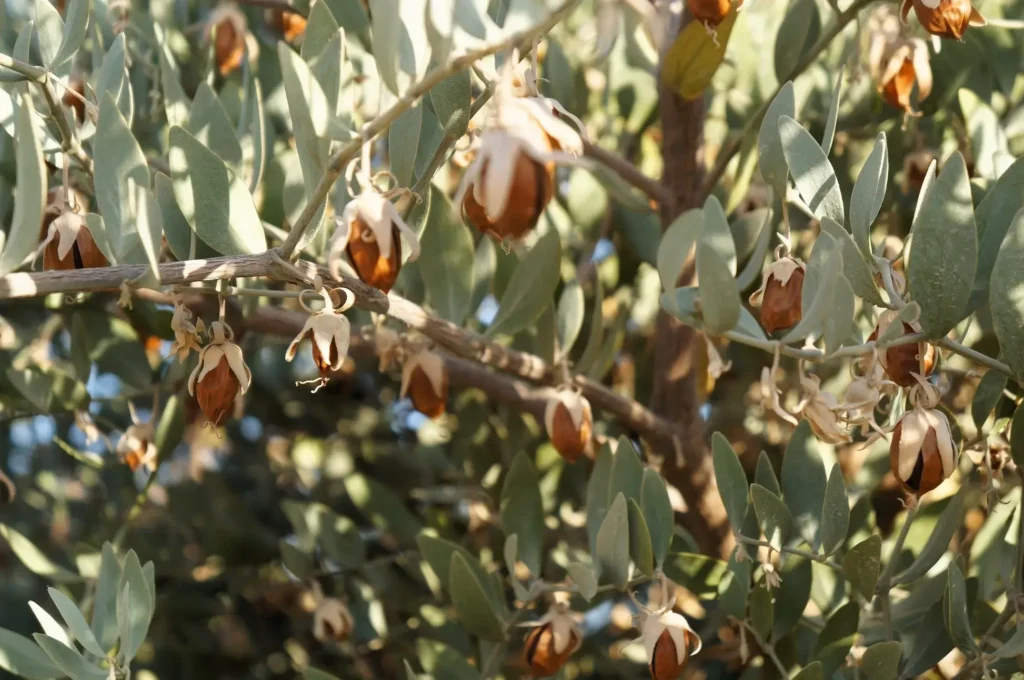
Jojoba nuts come from a hardy desert shrub (Simmondsia chinensis). While not sweet like typical fruits, the seeds are rich in a waxy oil, with a texture similar to almonds. Although generally not eaten raw (they can cause digestive upset), jojoba “beans” are an important survival resource because the oil is non-perishable and can be rendered and used as a substitute for cooking fat. Native tribes roasted or parched the seeds to make them more digestible.
4. Wolfberries
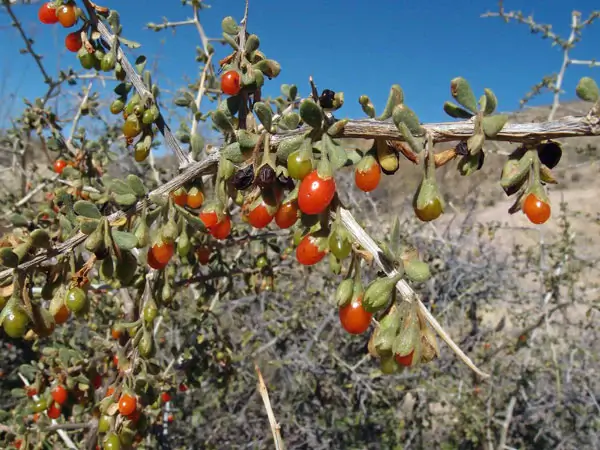
Also called goji berries (Lycium fremontii and Lycium berlandieri in the desert southwest), wolfberries grow on thorny shrubs in sandy washes. The small orange-red berries have a tangy-sweet flavor and can be eaten fresh, dried, or brewed into tea. They’re rich in vitamins, especially vitamin A, and prized for their energizing properties. The entire plant is tough as nails — but the berries themselves are delightfully soft and edible as trail snacks.
5. Mesquite Pods
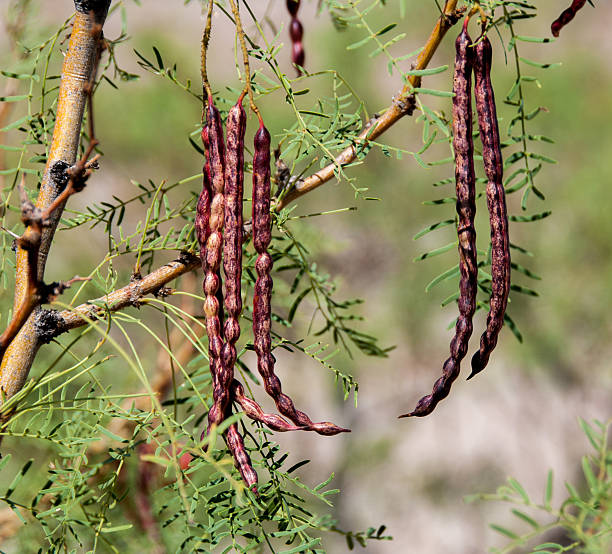
Mesquite trees (Prosopis species) produce long, tan pods filled with hard seeds surrounded by a sweet, dry pulp. When fully ripe and brittle, the pods can be ground into mesquite flour — a protein-rich, naturally sweet powder long used by Indigenous desert dwellers. The flour tastes of caramel and molasses and provides both energy and fiber. Mesquite beans can also be chewed straight off the tree in late summer for quick calories if you need them.
6. Ironwood Pods
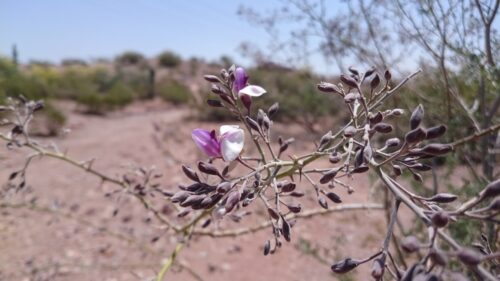
The desert ironwood tree (Olneya tesota) produces small, olive-shaped pods that turn brown when ripe. Inside each pod is a single hard seed. Although not typically eaten raw, the seeds were traditionally roasted and ground into meal. Ironwood seeds are very high in protein and fat — making them a valuable but labor-intensive survival food. The wood is incredibly dense (hence the name), but its fruits are more giving if you know how to use them.
7. Palo Verde Pod
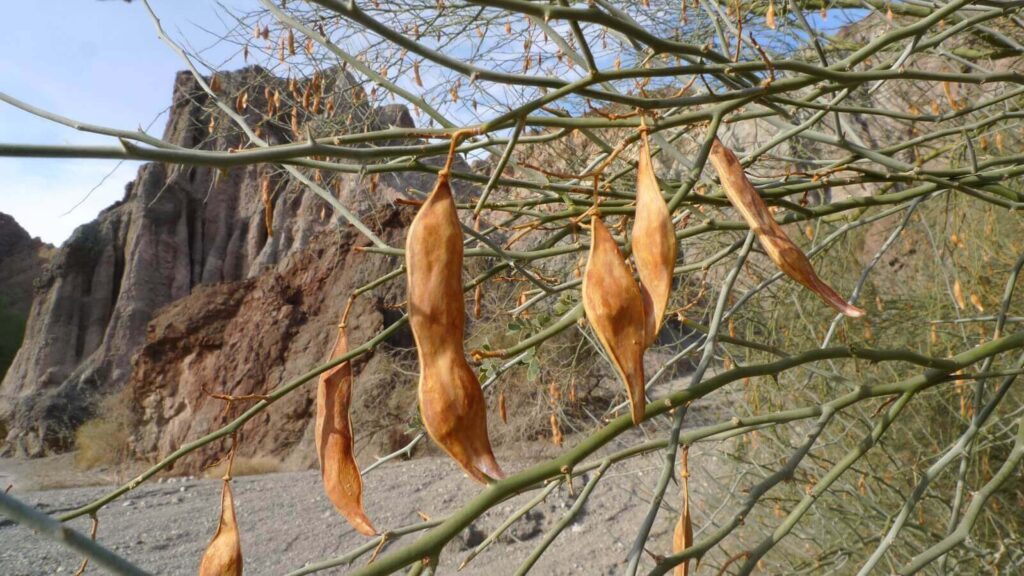
Palo verde trees (Parkinsonia florida and P. microphylla) are common across the Sonoran Desert and produce slender green pods in spring. When young, the pods are crisp, tender, and can be eaten fresh — tasting a bit like sugar snap peas. As they mature, the beans harden and need roasting or boiling. These green beans are packed with protein and were commonly used by native peoples as both a fresh vegetable and a dried survival staple.
8. Agave
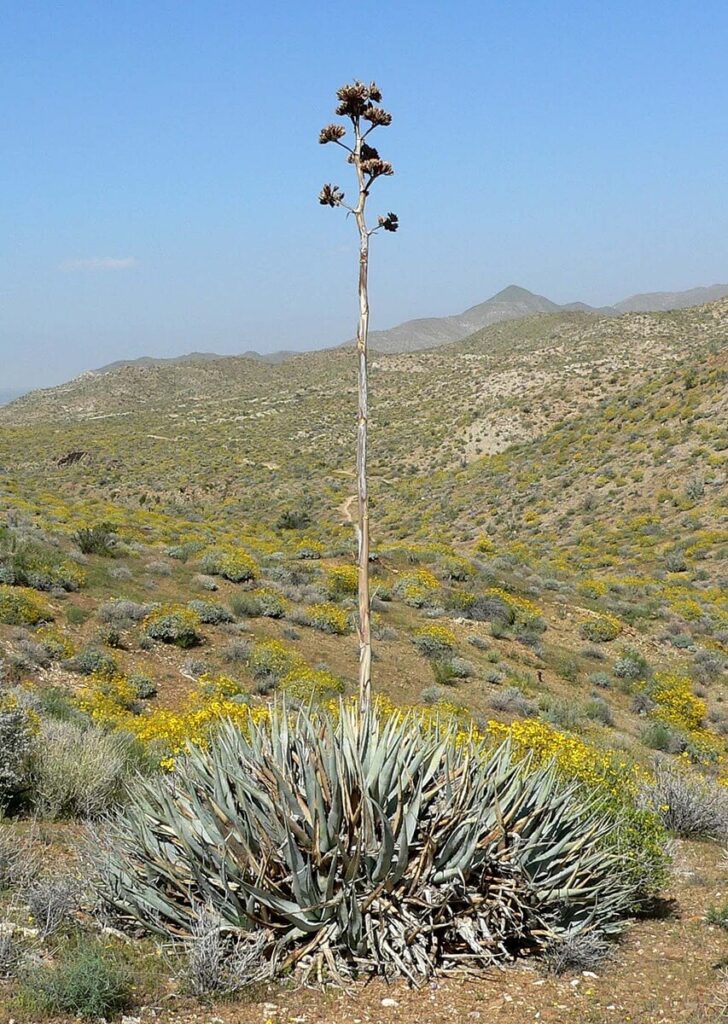
Agaves grow large flower stalks once in their lifetime (usually after many years) and produce clusters of seed pods or bulbils. While not juicy fruits in the typical sense, roasted agave hearts (the plant’s base before flowering) were an important desert food. Sweet like caramelized squash, agave hearts are energy-dense and rich in prebiotics. The nectar can also be collected and reduced into syrup. Agave stores moisture in its thick core — a helpful survival trick worth remembering.
9. Buckhorn Cholla
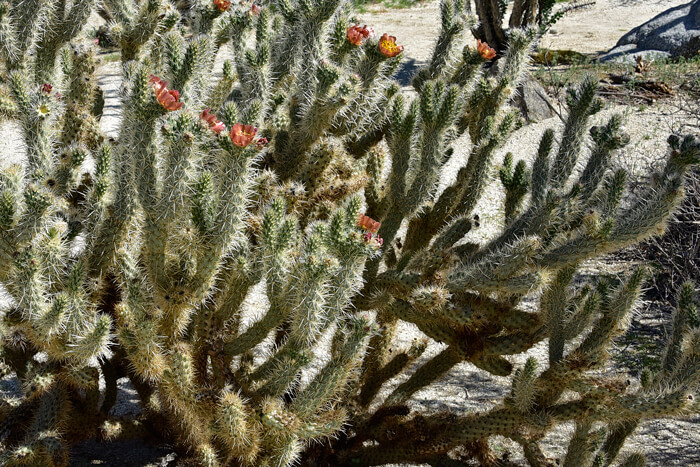
Buckhorn cholla (Cylindropuntia acanthocarpa) forms cylindrical fruits that remain on the cactus year round, even after losing their flowers. Carefully de-spined and roasted, the fruits have a tart, lemony taste and were eaten by Indigenous peoples for their vitamin C content. In emergencies, they’re a valuable food resource because they stay on the plant through the dry season and are easier to spot than ephemeral berries.
10. Piñon Pine Nuts
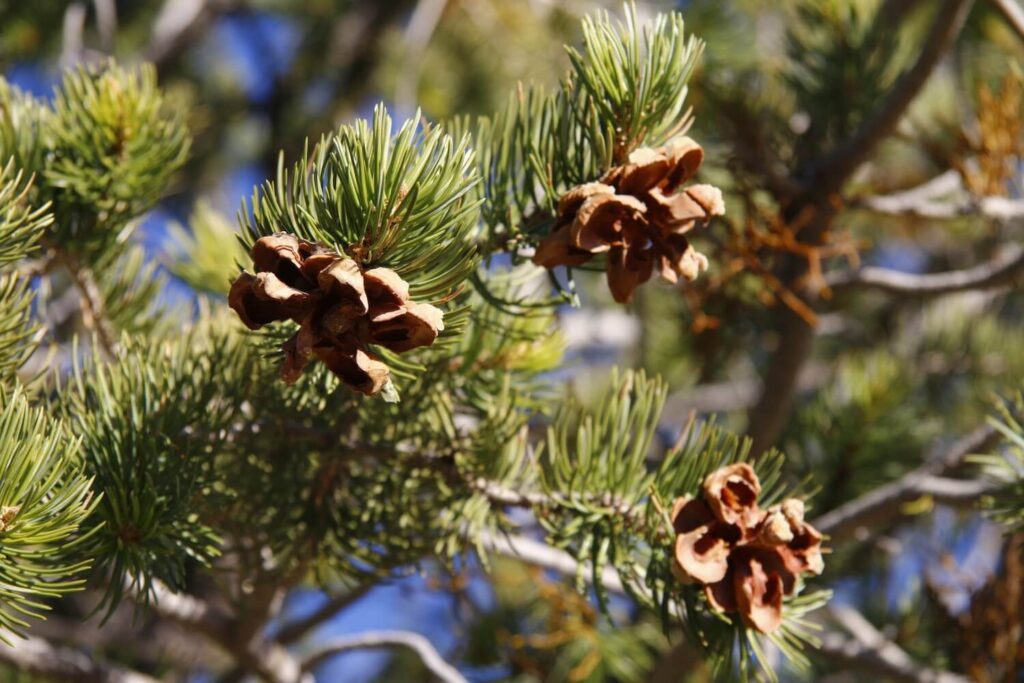
From pinyon pines (Pinus edulis, P. monophylla), these buttery nuts are enclosed in sticky cones that ripen in late summer and early fall. Foragers often compete with wildlife like birds and squirrels to harvest them before they scatter. High in healthy fats, protein, and calories, pine nuts are ideal for survival situations. Roast them to deepen their sweet, nutty flavor. Traditionally, cones were heated or sun-dried to make nut extraction easier.
11. Sotol Fruits
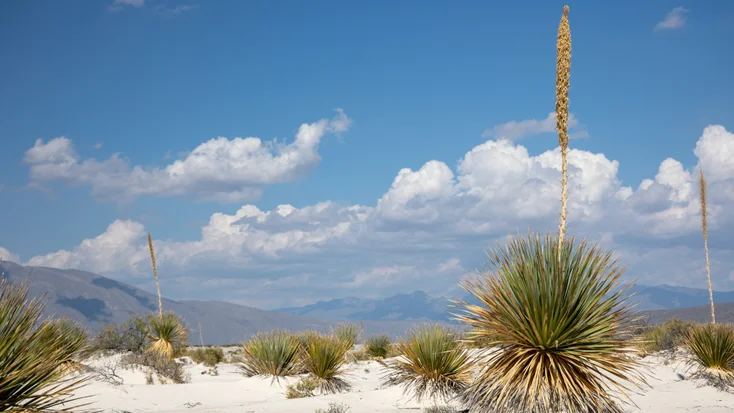
Sotol (Dasylirion wheeleri) is a spiky desert plant related to agave. It produces tall stalks covered in small greenish fruits that resemble tiny grapes. While the fruits themselves are edible when ripe, their main survival value comes from the fibrous, starchy crown at the plant’s base — which can be roasted for food or fermented into traditional beverages. The fruits can be chewed for quick sugars but are usually more useful for replanting.
12. Quercus emoryi (Emory Oak)
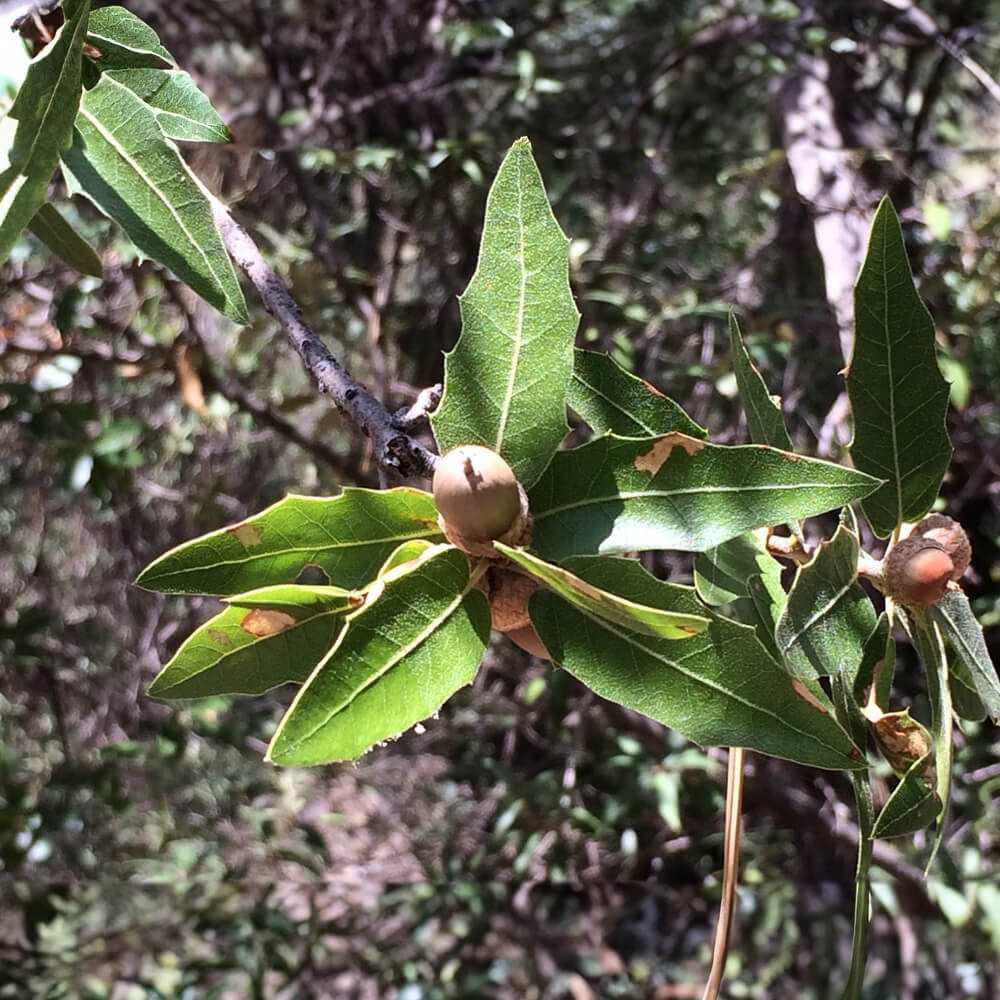
The Emory oak is a drought-tolerant oak native to the Southwest that produces acorns which are much less bitter than other oak species. These nuts can be eaten raw when young or lightly roasted, providing fats, carbs, and minerals. For longer-term use, they can be leached in water to remove remaining tannins and ground into acorn flour. Emory oak acorns were a major food source for desert tribes and remain a good wild staple today.
13. Desert Fig
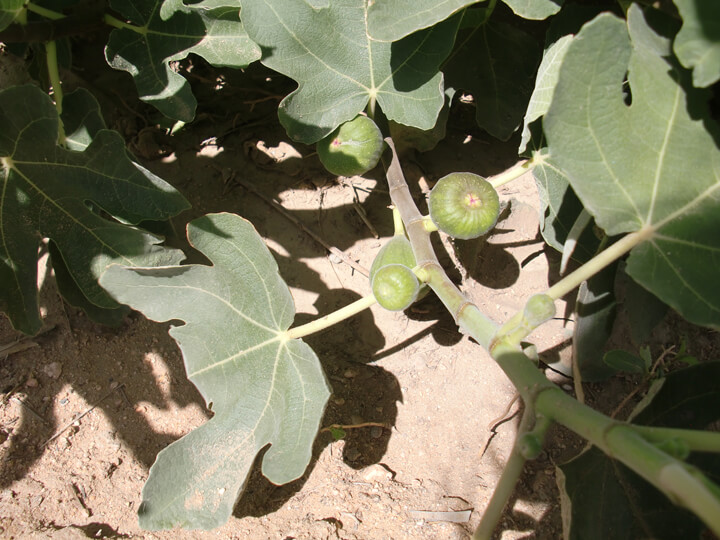
Desert figs cling to rocky canyon walls and cliffs, drawing moisture from cracks in the stone. Their small, soft fruits look like miniature figs and range in color from yellowish to dark red when ripe. Though less sweet than common garden figs, they are completely edible, providing sugars, fiber, and small crunchy seeds. If you can reach them, they make refreshing trail snacks — a welcome find in the bone-dry desert canyons they call home.
14. Dates
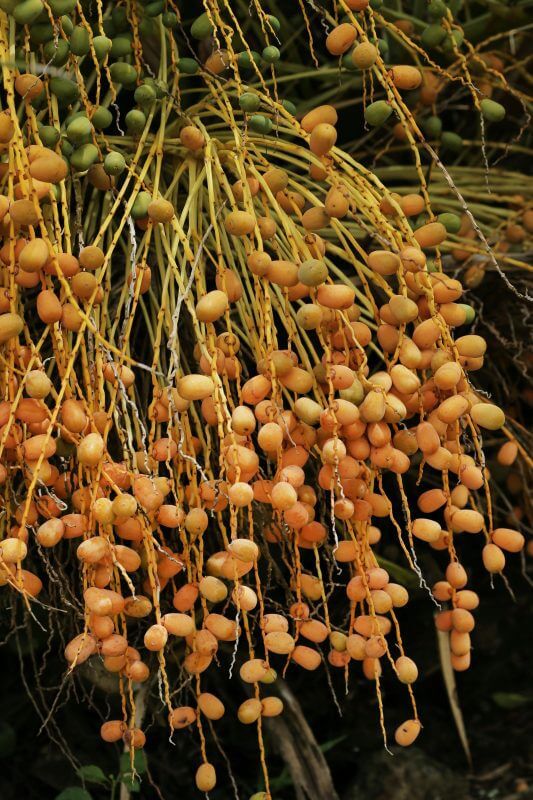
One of the oldest cultivated desert fruits, dates have sustained life in the Middle East and North Africa for thousands of years. Growing on tall palms rooted deep into oases, dates are rich in natural sugars, fiber, and potassium — earning them the nickname “bread of the desert.” They can be eaten fresh, sun-dried, or ground into paste for long‐lasting energy. In survival terms, few fruits offer such a hearty, non-perishable boost.
15. Desert Lime (Citrus glauca)
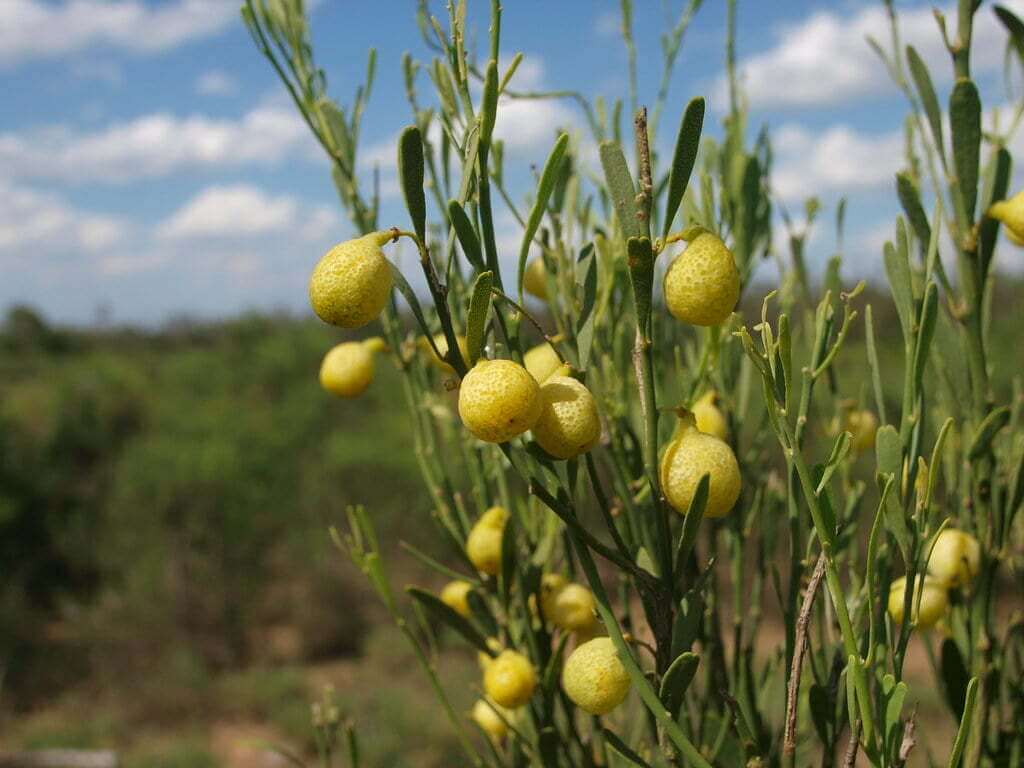
A tough little citrus native to outback Australia, the desert lime produces small, round fruits with thin skins and an intense tangy punch. They’re loaded with vitamin C and can be eaten whole — rind and all — making them simple to snack on in the field. Traditionally used in sauces, drinks, and preserves, these bush limes are highly valued by foragers as one of the freshest-tasting wild desert fruits around.
16. Dragon Fruit / Pitaya
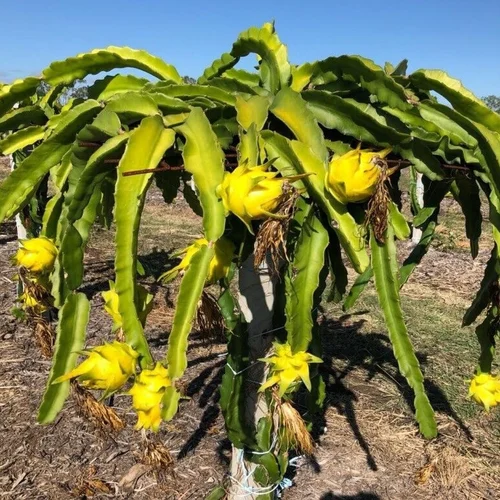
This climbing cactus thrives in arid, rocky areas of Central America. Its fruit looks almost otherworldly — hot pink or yellow skin with sweeping green scales. Inside is a soft, sweet pulp speckled with tiny edible seeds. Dragon fruit is refreshing and hydrating (around 90% water), making it ideal in hot conditions. It’s also rich in vitamin C and iron. If you’re foraging wild ones, be sure to wear gloves — the climbing vines can be covered in spines.
17. Argan Fruit (Argania spinosa)
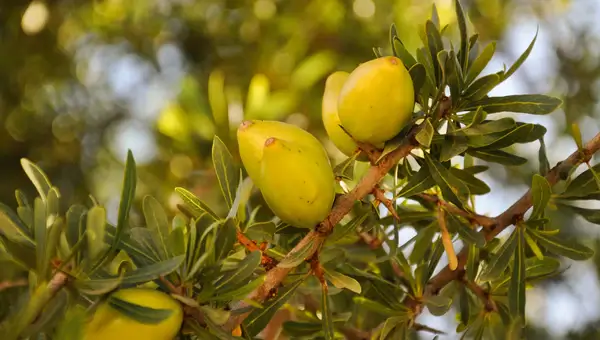
Native to the semi-deserts of Morocco, the argan tree produces small oval fruits with a thick, bitter flesh surrounding a hard nut. The edible part used by humans are actually the kernels inside the nut — roasted and cold-pressed to make argan oil (prized for its rich, nutty flavor and high vitamin E content). Cracking the stone is tough work, but in survival situations, the oil-rich kernels offer valuable fats and calories.
18. Bael Fruit (Aegle marmelos)
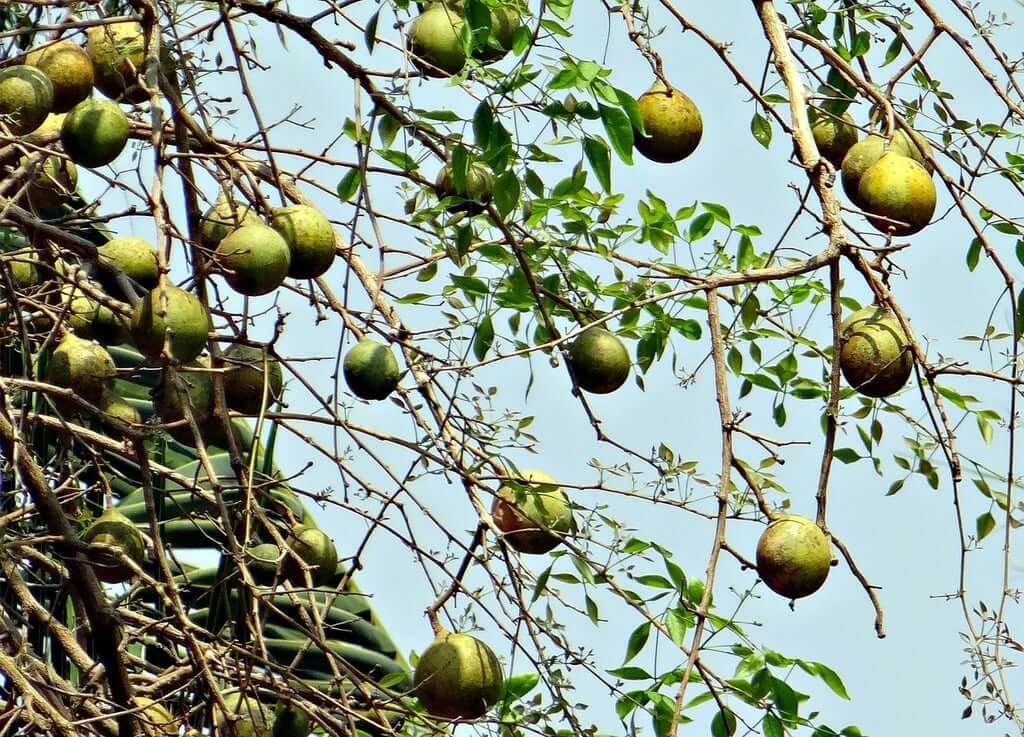
Bael trees grow in the dry plains of India and produce hard-shelled fruits that crack open to reveal an aromatic sweet pulp. The texture is sticky and marmalade-like, and it can be eaten fresh or mixed into drinks. Bael is known to aid digestion, keep you cool, and is packed with nutrients, making it a sought-after fruit during India’s scorching summers. Just be prepared — the shell is tough and requires force to split.
19. Desert Quandong
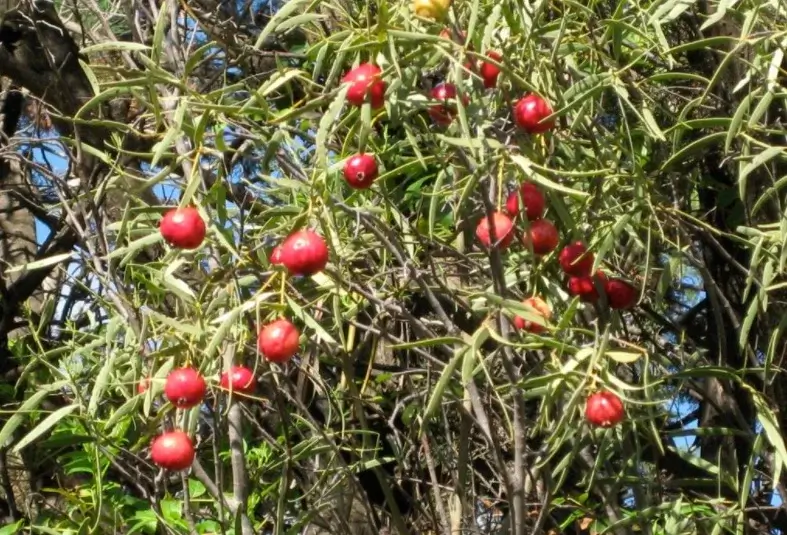
Nicknamed the “wild peach,” the desert quandong is a bright red fruit with a tart yet fruity flavor. Found across the Australian interior, it has long been a staple of Aboriginal bush foods. The thin flesh surrounds a large textured pit and is rich in vitamin C. Quandongs can be eaten raw, dried, or made into jams — and offer a welcome splash of color in an otherwise pale landscape.
20. Desert Gooseberry (Ribes velutinum, Ribes quercetorum, etc.)
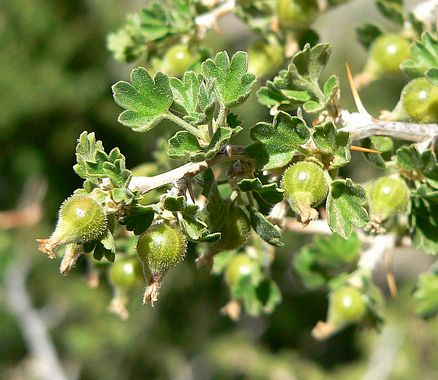
Growing in arid canyons and rocky slopes, desert gooseberries are small, round fruits protected by a spiny husk that dries and splits when ripe. The berries range from yellow to reddish-orange and have a tart, refreshing flavor that can be eaten raw or dried for later use. Packed with vitamin C and natural sugars, they were prized by Native desert peoples as both food and medicine. These resilient shrubs are a welcome sight for foragers — just mind the prickles when harvesting!
21. Desert Hackberries (Celtis pallida, C. reticulata, etc.)
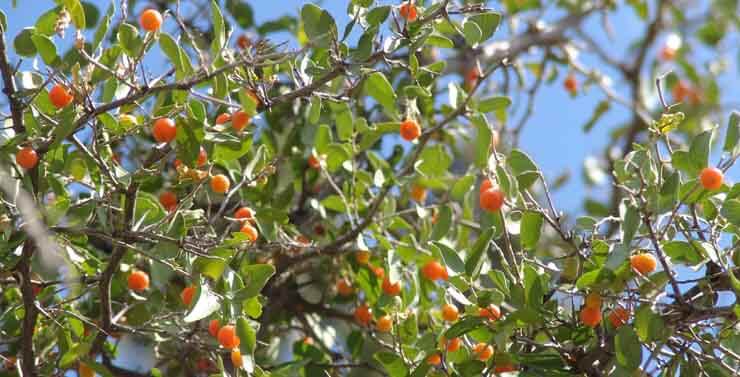
Hackberry shrubs and trees grow in parched washes and rocky slopes. Their pea-sized orange-red berries are crunchy on the outside and sweet within, with a thin layer of pulp surrounding a nut-hard seed. Loaded with sugars, fats, and carbohydrates, hackberries were prized by Native Americans and often pounded into cakes or mixed into survival rations. A true “energy fruit” of the desert.
22. Desert Apricot
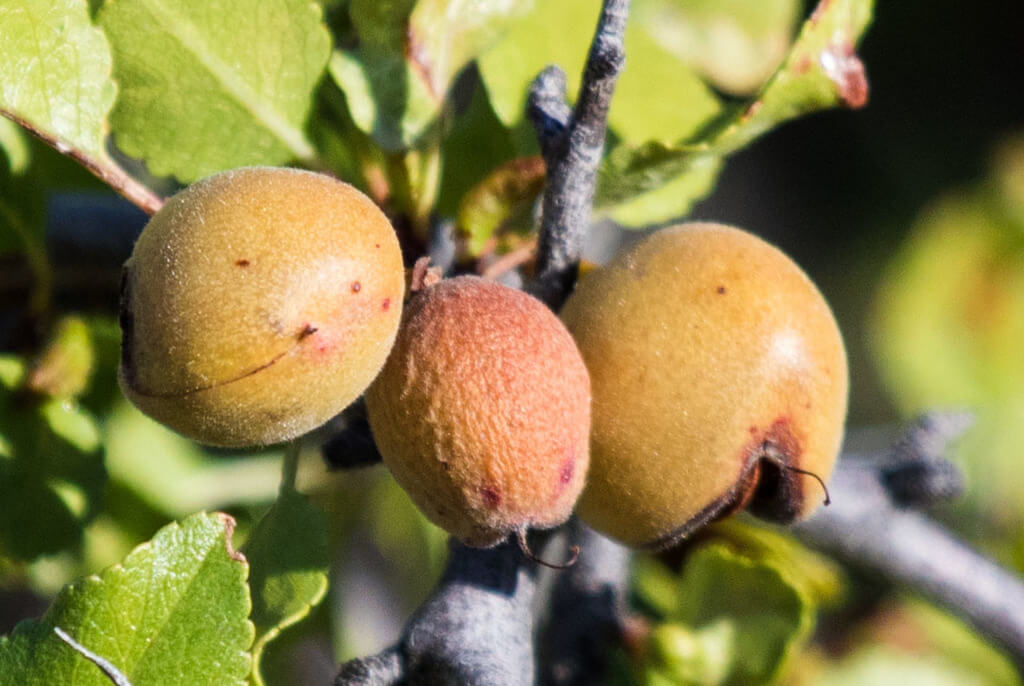
Native to southern California’s deserts, the desert apricot produces small yellow fruits with a dry but edible pulp and highly valued inner kernels. Used by the Cahuilla and Kumeyaay peoples, these fruits were sun-dried and stored as nutrient-rich winter food. Their fragrant blossoms also mark seasonal change in the desert landscape.
23. Yucca Fruit (Yucca baccata / Banana Yucca)
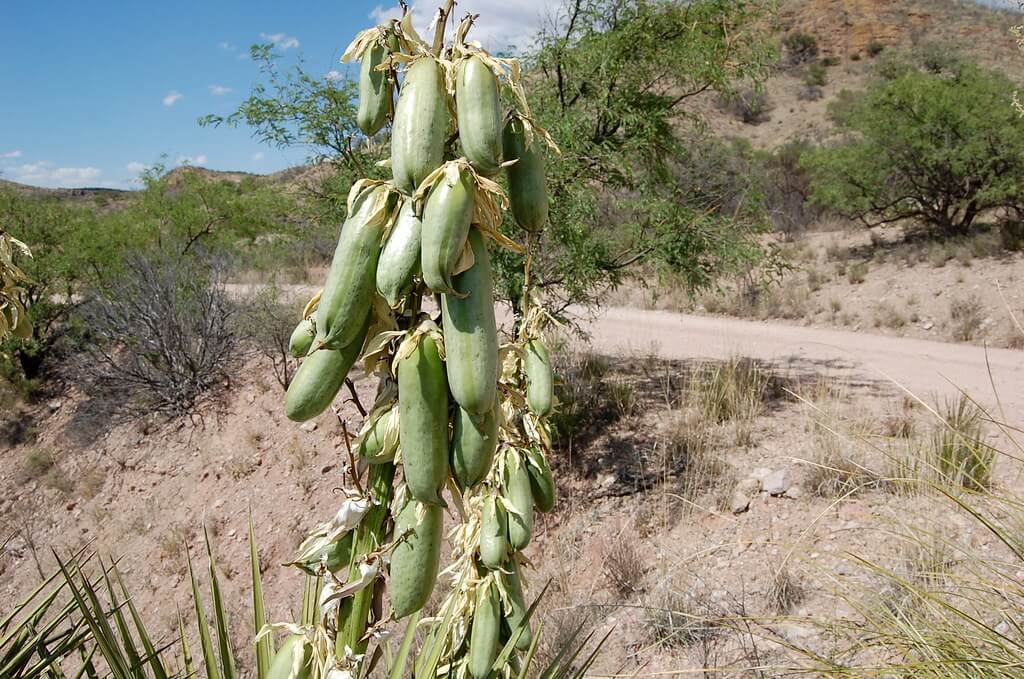
The yucca plant, famous for its sword‐like leaves and towering flower stalks, also produces fleshy seedpods that can be eaten when harvested young. These fruits grow in clusters and are typically green, turning brown as they mature. When still tender, the pods can be roasted, boiled, or even eaten raw in a pinch — offering a mild, squash-like flavor with a hint of sweetness. As they age, the flesh becomes fibrous and less palatable, so timing is important. Yucca fruits were a traditional summer food for many Southwestern tribes and are rich in carbohydrates and vitamin C, making them a valuable wild harvest for anyone traveling through desert terrain.
Also check: 45 Forest Fruits You Can Forage and Enjoy
